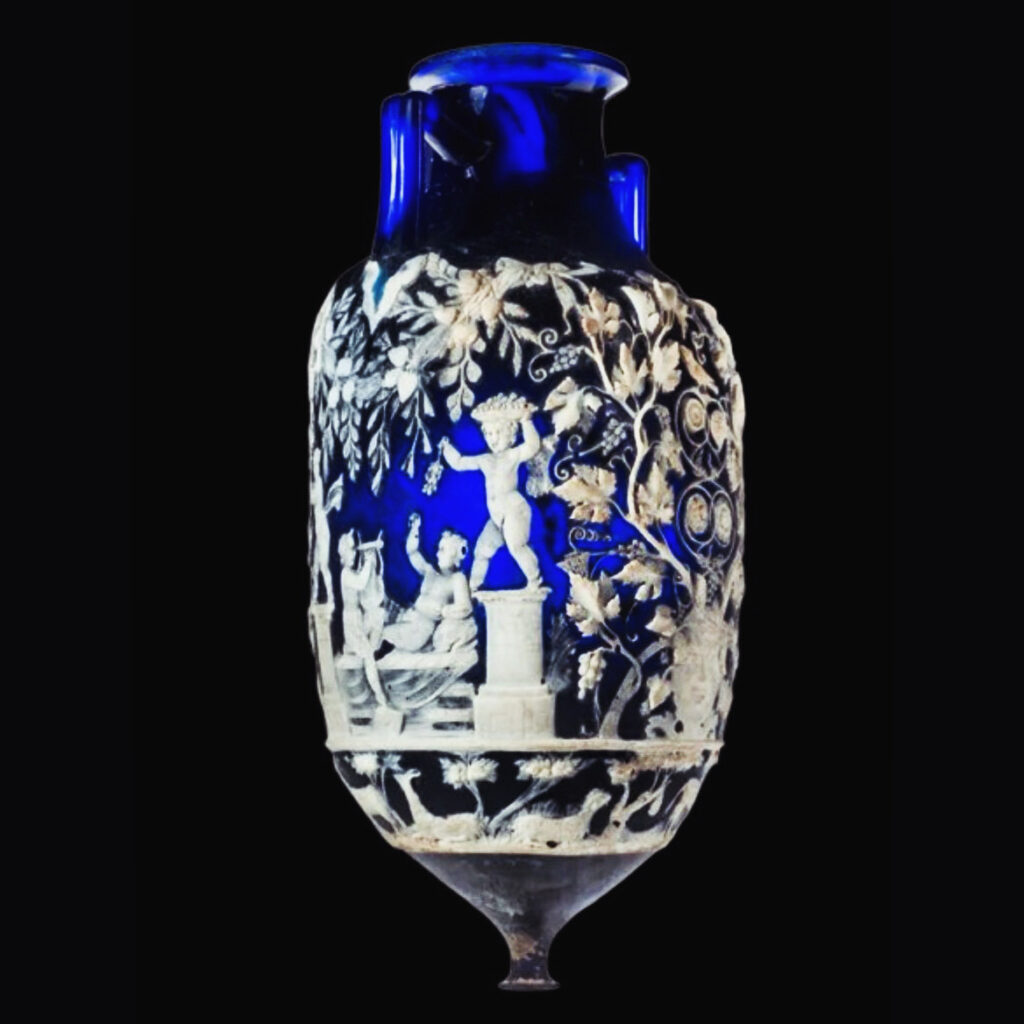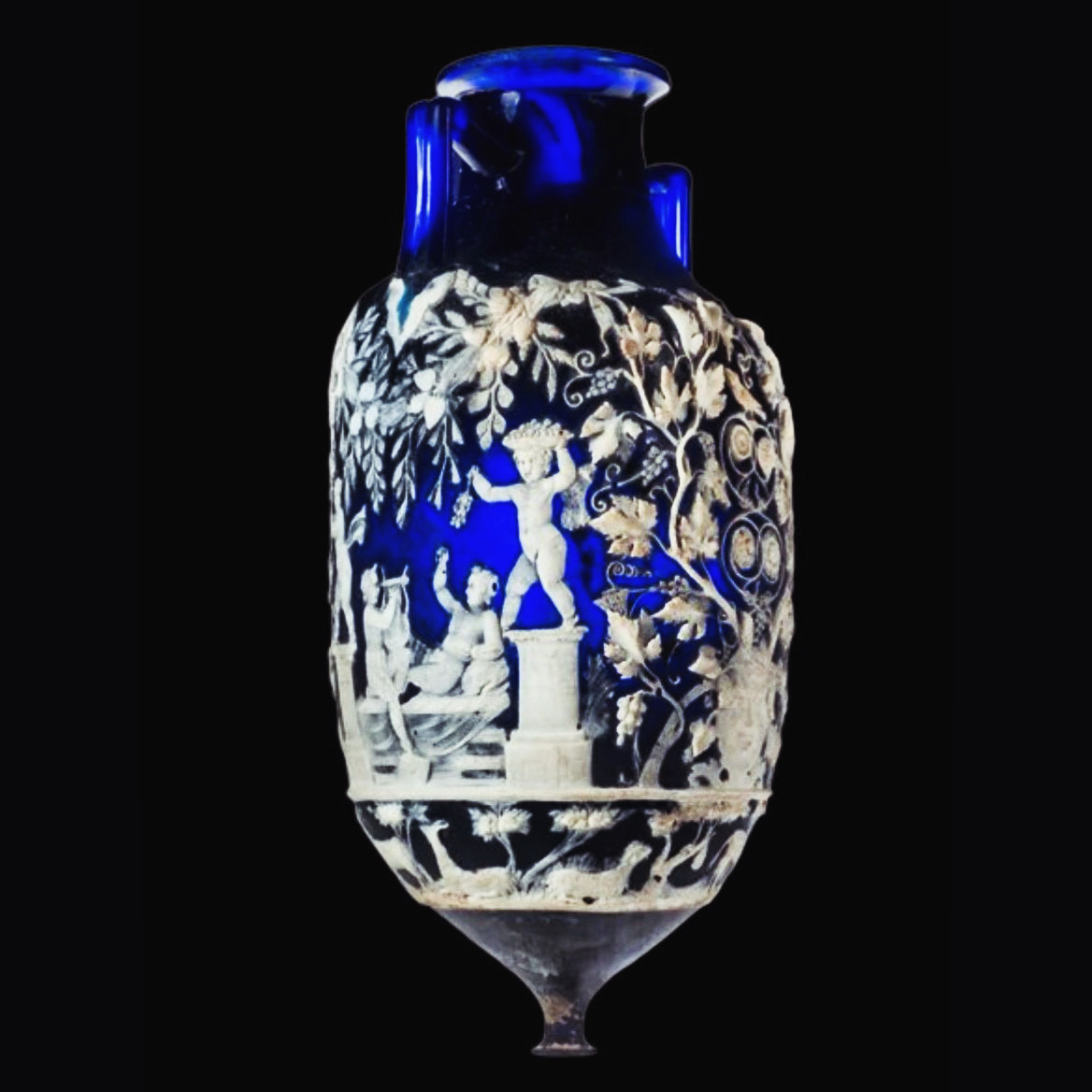Unusually large for surviving glass works (just over 30 cm tall), and in the most luxurious mode possible, this pointed amphora in cameo glass is a wonder to behold (and best beheld with a strong light to illuminate its dark blue body).


The lavish decoration is appropriate for a vessel shape intended to store wine: little cupids toil to harvest grapes for the vintage, then luxuriate imperiously beneath the trailing vines. The vase was discovered – famously – in a tomb within the ‘Street of Tombs’ at Pompeii in 1837 during the visit of Bourbon King Ferdinand II. Pretty great to have such a provenance and archaeological context, right? Well, not so fast…the tradition of staging ‘discoveries’ while welcoming dignitaries and donors to active excavations is a long one.
Although the amphora was found full of ashes, implying it might have been (re)purposed as a funerary urn for the burial of the tomb’s occupant, it also could have been restaged as part of the excavators’ understandable wish to present a noteworthy memory for the high profile guest…perhaps giving in to a temptation to stage sites and even salting them with especially juicy finds.




